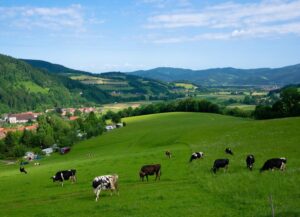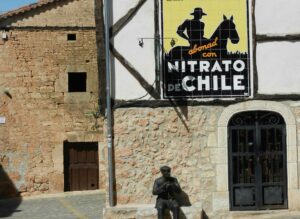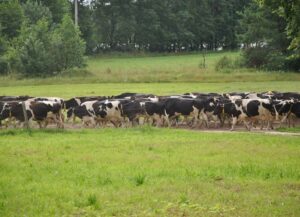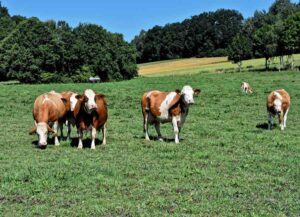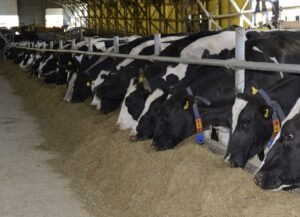Alvaro Garcia
When the price relationship between inputs-outputs in livestock production is not favorable, producers look for feed alternatives that improve income over feed costs. The different digestive system in ruminants, a highly complex association between the host (ruminant) and digestive tract microorganisms, allows us to explore other strategies. Because of this symbiotic relationship with bacteria in the rumen, reticulum, and to a lesser extent the coecum, ruminants can transform plant fiber and non‐protein nitrogen (NPN) into highly nutritious human edible products.
From the early works of Virtanen in the mid 1960’s dietary supplementation with NPN to improve feed fermentation and enhance performance have been widely explored. The use of supplemental urea in ruminant diets replacing up to 33% of dietary protein nitrogen or 1% of total ration dry matter is accepted as safe. Feeding urea however is not devoid of challenges and requires judicious and cautious use. Its rapid conversion to ammonia in the rumen, can exceed the capacity of the microbial population to utilize it, and be potentially toxic to the ruminant once absorbed.
Nevertheless, since approximately half of the global agricultural plant production consists of fibrous crop residues, it makes sense to try to transform them into human food for human consumption. Using corn stalks for example have been explored as ruminant feed for as long as the history of the production of this cereal grain. In addition, close to 40% of the earth’s surface is covered with grassland in areas with characteristics non-suitable for economical intensive agricultural production.
In a recent experiment (Carvalho et al., 2020), non‐lactating heifers were infused with 59 g/day of NPN in the form of ammonia or urea into their rumen. Heifers were 20 ± 0.5 months and 561 ± 42 kg. Similarly, 1 kg of concentrate was added to the forage initially during the morning feeding to adapt the animals to urea. After they were supplied daily with 1 kg of concentrate containing the urea and fed a low‐quality grass free choice. Nitrogen supplementation was 59 g per animal per day in such a way to mimic the commercial slow‐release urea products. This was approximately the equivalent of 0.2 g urea/kg of body weight (BW), elevating the crude protein from the basal diet to approximately 13%.
Treatments were as follow:
- Daily 50 g dose of urea
- Daily 150 g dose of urea
- Daily 50 g dose of ammonium
- Daily 150 g dose of ammonium
The maximum N dose supplied approximately 0.25 g urea/kg of BW.
Increasing the dose of urea negatively impacted dry matter and fiber (NDF) digestibility, N efficiency and N excretion. The reason was likely that rumen ammonia and rumen pH increased to a point where fiber digestibility was reduced, and the excess ammonia absorbed through the rumen wall and excreted as urea through the urine. Ruminal fiber fermentation is sensitive to pH with cellulolytic bacteria activity being depressed when pH is below 6.2 with optimum microbial growth at pH 6.7. This is important to consider in order to maximize the benefits of urea supplementation.
There need to be enough fermentable carbohydrates to optimize microbial fermentation yet not too much as to decrease rumen pH below 6.7. This can usually be achieved by using a ratio of 10 parts of grain to 1 part of urea. Since the use of nitrogen from urea also replaces sulfur present in plant proteins, higher concentrations of urea in the diet require to also pay attention to the sulfur content of the overall diet.
Results from this experiment confirm that urea can be used efficiently as an NPN source. It was also speculated that the use of products which the release of urea in the rumen result in greater stability of the rumen pH, which in turn results on increases in fiber fermentation, maintenance of N balance and microbial protein synthesis.
The data empirically show that supplying a slow release nitrogen compound is an alternative to conventional ruminal urea supplementation. It is still to be determined however the optimum rate and how nitrogen returns to the rumen to facilitate effective fiber digestibility.
Reference
PC de Carvalho, I., Doelman, J., Martín‐Tereso, J. 2020. Post‐ruminal non‐protein nitrogen supplementation as a strategy to improve fibre digestion and N efficiency in the ruminant. Journal of Animal Physiology and Animal Nutrition. 104(1): 64-75.
© 2020 Dairy Knowledge Center. All Rights Reserved.



